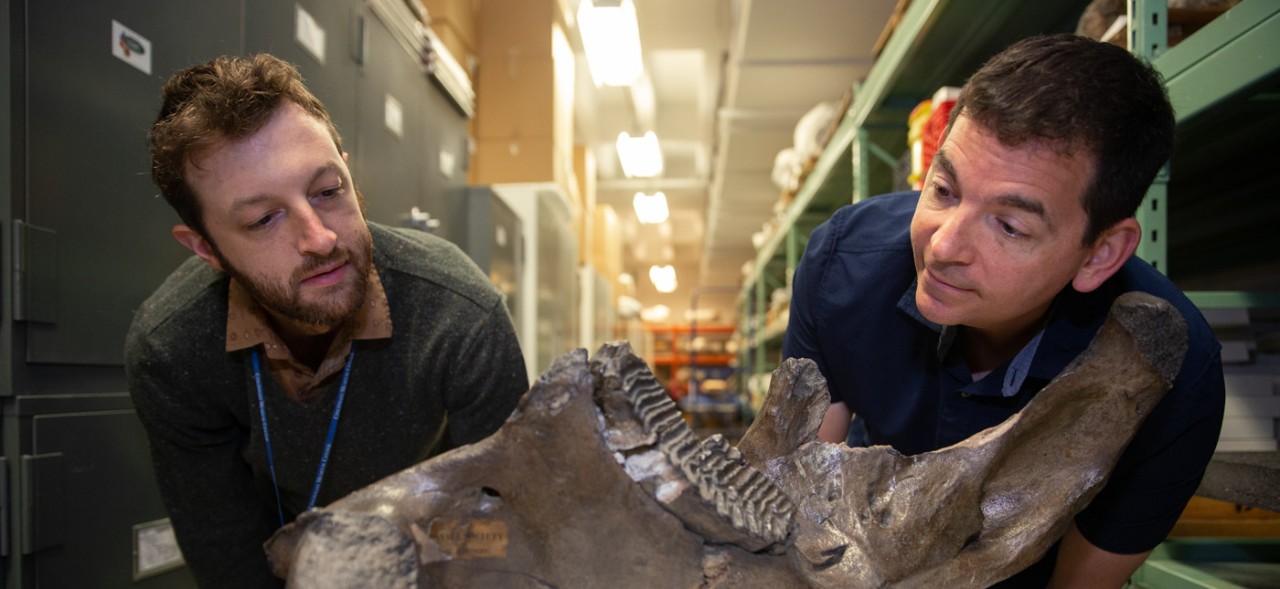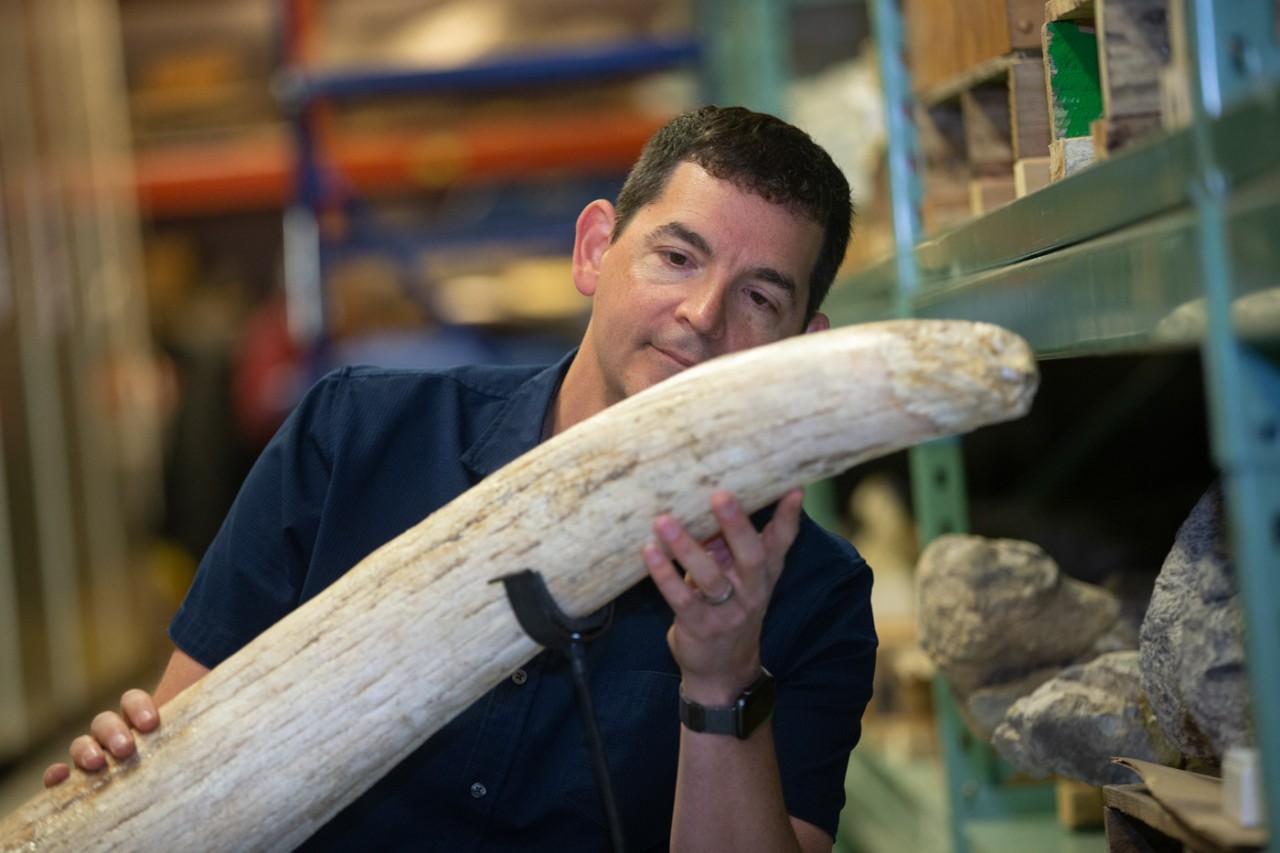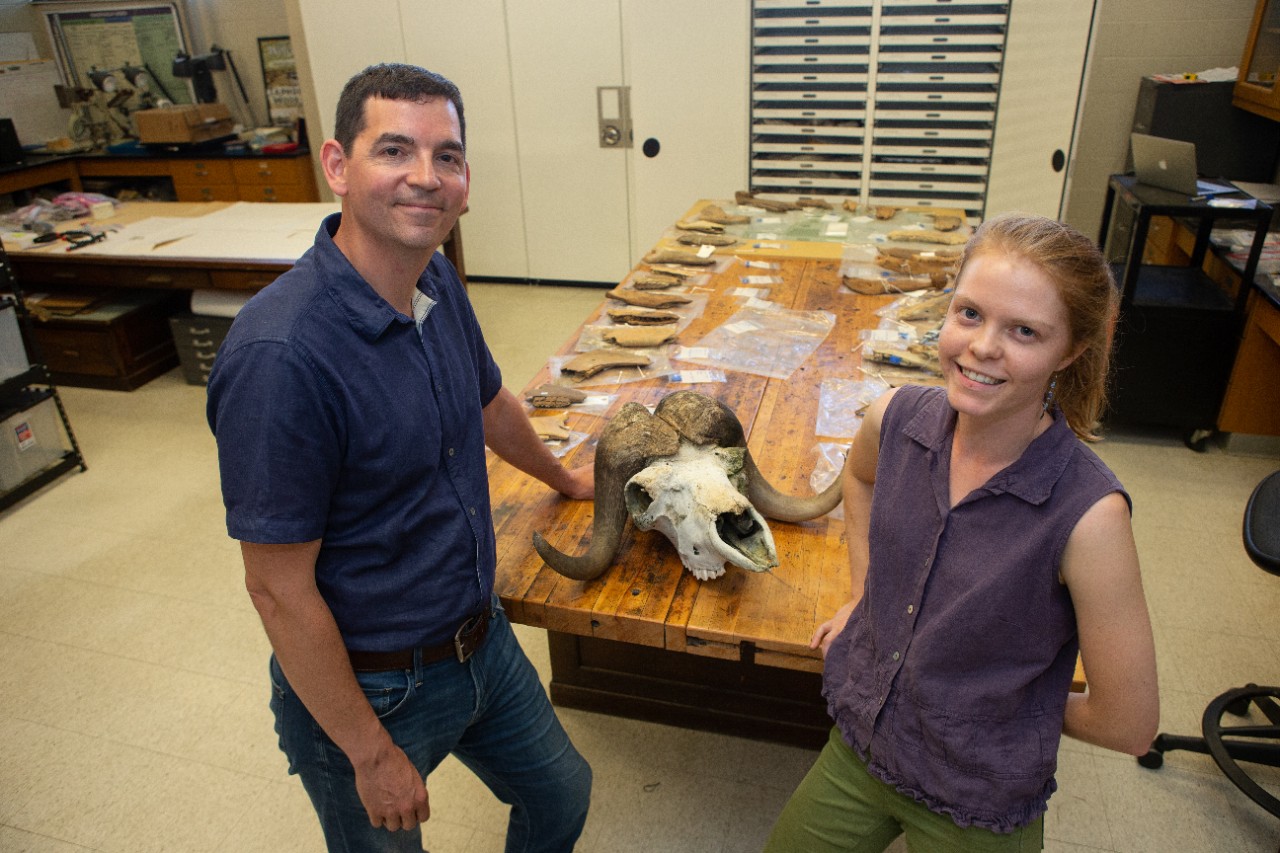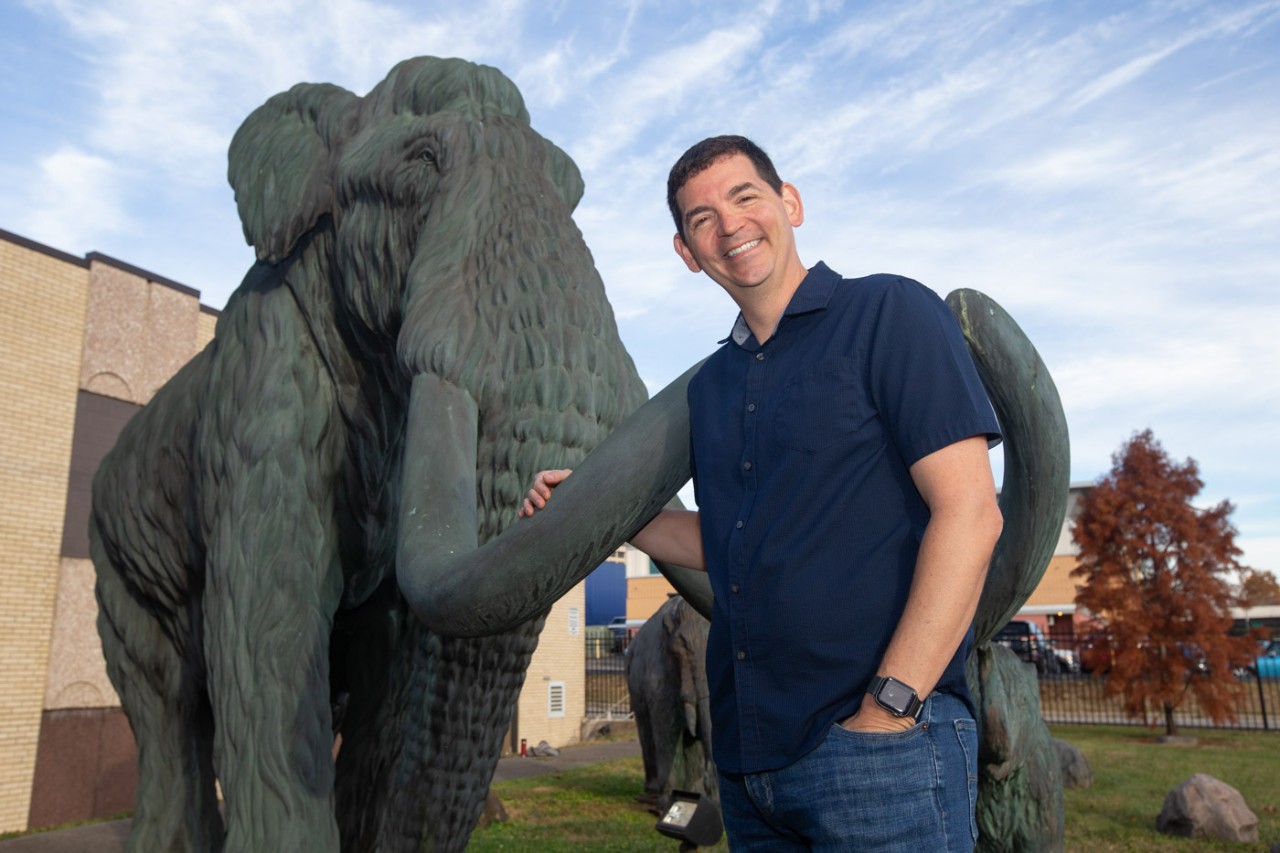
UC finds mammoth problem with extinction timeline
DNA found in sediments can mislead since mammoths can shed genetic material long after they die
Exactly when mammoths went extinct has fascinated paleontologists for generations, perhaps because their decline coincided with the arrival of people to North and South America.
So it’s only natural to wonder if humans more than contributed to the extinction of these enormous beasts of the ice age more than 10,000 years ago.
A University of Cincinnati paleontologist refutes the latest timeline published in 2021 in the journal Nature that suggested mammoths met their end much more recently than we believed. An international team of researchers examined environmental DNA of mammoth remains and more than 1,500 arctic plants to conclude that a wetter climate quickly changed the landscape from tundra grassland steppe to forested wetlands that could not support many of these big grazing animals, driving mammoths to extinction as recently as 3,900 years ago.
But in a rebuttal paper to be published Dec. 1 in Nature, UC College of Arts and Sciences assistant professor Joshua Miller and co-author Carl Simpson at the University of Colorado Boulder argue that the environmental DNA used to establish their updated timeline is more complex than previously recognized.
“The issue is you have no idea how old that DNA is,” Miller said. “Sedimentary deposits are complex. Materials of different ages are routinely buried together.”

UC assistant professor Joshua Miller examines a mammoth tusk at the Cincinnati Museum Center's Geier Collections and Research Center. Photo/Andrew Higley/UC Marketing + Brand
Researchers have many tools to date sedimentary deposits and the materials contained in them. But not everything can be dated, Miller said.
“We can radiocarbon date all kinds of things: bones, teeth, charcoal, leaves. That’s very powerful. But currently we can’t independently date DNA found in sediments,” Miller said.
From recent discoveries like the baby mammoth found in Canada this year, we know that many ice age animals that died tens of thousands of years ago can become mummified in the arctic’s dry, cold environment. Miller said researchers can’t tell whether environmental DNA preserved in sediment was shed from a living or dead animal.
“DNA is shed from organisms all the time,” Miller said. “In fact, DNA continues to be shed long after the animal dies. In places where decomposition is slow, that means long-dead and even long-extinct species can continue to make their way into surrounding sediments. In the arctic and other cold-weather places, it can take thousands of years for something to decompose.”
They’re tantalizingly similar to animals that live among us today. We can almost touch them. That makes mammoths really alluring.
Joshua Miller, UC paleontologist
The researchers say the slow decomposition of animals in arctic regions could explain how mammoth DNA is showing up thousands of years later than the most recent mammoth fossil discovered. The paper notes that the mummified remains of elephant seals near Antarctica can be more than 5,000 years old.
In some remote parts of the arctic, it’s not unusual to find 2,000-year-old caribou antlers on the surface, Miller said. But the most recent mammoth fossils found in the Siberian area were entombed in permafrost 11,000 years ago.
Simpson said his work studying marine environments from recently eroded hillsides demonstrates how difficult it is to date ancient specimens.
“Seashells can sit on the seafloor for thousands of years. When you see shells on the beach, some could be from animals that died recently while others might be from shellfish that died millennia ago,” Simpson said. “This happens in the vertebrate record as well.”

UC paleontologist Joshua Miller and Abigail Kelly, a 2022 doctoral graduate, study ice age fossils in his lab in this 2019 file photo. Photo/Andrew Higley/UC Marketing + Brand
Miller has spent his career using isotopic analysis to study extinct ice age animals. Earlier this year, he and his research partners followed the life story of a single mastodon as it traveled across what is now the Midwest before dying in what they believe was a territorial mating battle with another mastodon.
He regularly undertakes scientific expeditions to the Arctic National Wildlife Refuge to study the historic migrations and human impacts on caribou.
Miller said the question remains what impact, if any, humans had on the global decline and extinction of mammoths. Humans were known to use fire to alter landscapes in profound ways, Miller said. They also hunted mammoths and made use of their ivory tusks.
Examining the causes of extinction requires an accurate timeline. When did mammoths vanish?
“The timing between human arrival and extinction is fairly tight in many places. Until recently, this included what is currently the contiguous United States,” Miller said. “But recent studies have pushed back the arrival of humans here, creating more of a gap between human arrival and extinctions of mammoths and other megafauna. This certainly has added complexity to the debates over the mechanisms of those extinctions.”
So when did the last mammoths die off? Scientists say most mammoths went extinct around 10,000 years ago but remnant populations lived on islands such as Russia’s Wrangel Island until much more recently.
This cohabitation with modern humans is one reason mammoths capture our imaginations, researchers said.
“They’re tantalizingly similar to animals that live among us today,” Miller said. “We can almost touch them. That makes mammoths really alluring. For many people they are the poster children of ice age megafauna.”
“Mammoths lived on the Channel Islands of California near where I grew up,” Simpson said.
The islands were home to pygmy mammoths weighing 2,000 pounds. Today, the biggest mammal on the island is a tiny endemic fox.
“I think about how amazing it would have been to grow up with all of those big animals walking around,” Simpson said. “But I just missed them.”
Featured image at top: Cameron Schwalbach, paleontology collections manager for the Cincinnati Museum Center’s Geier Collections and Research Center, and UC assistant professor Joshua Miller examine a mammoth skull. Photo/Andrew Higley/UC Marketing + Brand

UC assistant professor Joshua Miller stands next to a bronze mammoth sculpture outside the Cincinnati Museum Center's Geier Collections and Research Center. Photo/Andrew Higley/UC Marketing + Brand
Impact Lives Here
The University of Cincinnati is leading public urban universities into a new era of innovation and impact. Our faculty, staff and students are saving lives, changing outcomes and bending the future in our city's direction. Next Lives Here.
Related Stories
UC‘s College of Arts and Sciences taps innovative new leadership
December 20, 2023
The College of Arts and Sciences announced Ryan J. White and Rina Williams as the newest divisional deans of Natural Sciences and Social Sciences. White and Kennedy’s inclusion will bring new focuses and structure around student success and the college of Arts and Sciences’ advancement. Both will officially begin their new terms on Jan. 1, 2024.
What is UC’s 4 + 1 program?
December 4, 2023
You may be a UC student thinking about taking your education to the next level — UC’s College of Arts and Sciences has a pathway to help you do just that. A&S has no fewer than 15 five-year programs — from biological sciences to Spanish to psychology — where you can earn both your bachelor’s and master’s degrees in just five years, versus the traditional six-year track. The Bachelors and Master’s 4 + 1 Program is designed to increase your marketability and deepen your understanding of the subject matter. And in an increasingly competitive job market, you may want to investigate an additional year of study.
Clifton Court Hall grand opening garners detailed media coverage
September 20, 2023
The University of Cincinnati celebrated the opening of Clifton Court Hall on Tuesday, Sept. 19, with a ribbon cutting, attended by approximately 200 administrators, faculty, staff and students. The event was covered by multiple media outlets.
